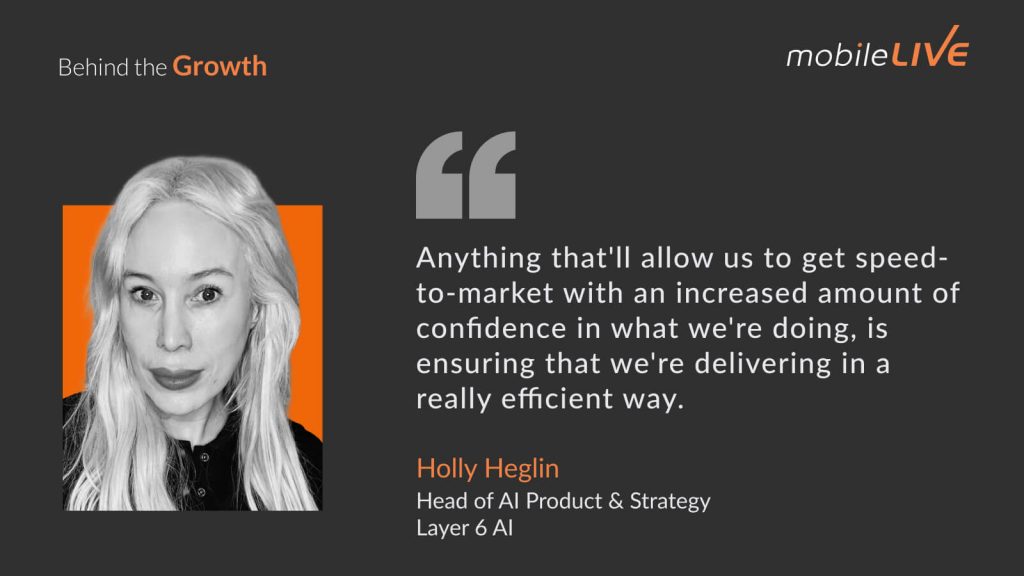Key Insights
Balancing Innovation and Governance in AI
In regulated industries, AI innovation requires a delicate balance between rapid development and robust governance. Agile engagement models with second-line partners can help navigate this challenge. By involving governance teams early in the development process, organizations can craft effective model monitoring plans and risk assessment strategies for new AI solutions. This approach allows for faster innovation while maintaining the necessary safeguards. The key is to view governance not as a roadblock, but as an integral part of the development process that enhances customer confidence and mitigates potential risks. This collaborative method enables organizations to push the boundaries of AI capabilities while ensuring responsible and ethical implementation.
Democratizing AI Tools for Business Growth
Expanding access to AI tools beyond technical experts can drive innovation and solve real business problems. By providing business users with the means to explore AI capabilities and hypothesize solutions, organizations can tap into a broader pool of domain expertise and creativity. This approach doesn’t replace the need for specialized AI talent but rather complements it. Business users can identify potential applications and develop initial concepts, which can then be refined and implemented by technical teams. This democratization of AI tools fosters a culture of innovation across the organization, enables faster problem-solving, and ensures that AI solutions are closely aligned with actual business needs and opportunities.
Agile AI Delivery: A Product Mindset
Adopting a product mindset in AI development can significantly improve delivery times and business value. This approach involves treating AI solutions as evolving products rather than one-off projects. By implementing agile methodologies, cross-functional teams can work collaboratively to deliver incremental value quickly. This method allows for faster adaptation to changing requirements and emerging technologies. The product mindset also emphasizes continuous improvement and regular releases, ensuring that AI solutions remain relevant and effective over time. This approach has been shown to reduce delivery times from years to months, even for complex solutions like GenAI, while simultaneously improving alignment with business objectives and stakeholder needs.

Episode Highlights
From Math to AI: A Career Evolution
Holly Heglin shares her journey from a PhD in pure math to becoming a leader in AI delivery. She explains how her career evolved alongside the expanding AI field, allowing her to grow with the industry. Holly’s experience spans various roles, including proof-of-concept development, production-grade GenAI solutions, and AI strategy. She emphasizes the ongoing growth of the AI industry and the diverse opportunities it presents for professionals from various backgrounds.
“I entered business and started my career, realizing that I wanted to kind of shift gears a bit. When you do grad school, you’re going deep on topics, and you can spend months trying to prove one single thing. I wanted to get into a bit of a faster-paced environment. Along the way, my 10 years in business at each step, I’ve sort of said, ‘Maybe I should move out into the actual business.’ And somehow I just kept getting drawn in. It’s like a big black hole.”
Operational Challenges in AI Delivery
Holly discusses the operational challenges in delivering AI solutions, particularly in heavily regulated industries. She highlights the importance of governance, data management, and legal considerations, especially with the advent of GenAI. Holly emphasizes the need for speed-to-market while maintaining confidence in the solutions. She explains how her focus on operational efficiency has helped overcome these challenges, including the implementation of audit-ready checklists and efficient delivery processes.
“There are a lot of challenges to overcome. Maybe not unforeseen challenges, but we have a lot of hurdles and a lot of gates to get through when it comes to governance, when it comes to data, when it comes to understanding legalities, and that’s only increased in complexity as we move into the GenAI space. Anything that’s going to allow us to get speed to market, with an increased amount of confidence in what we’re doing, is crucial.”
Scrappy Innovation and Patents
Holly shares her experiences with “scrappy innovation,” highlighting how valuable solutions can be created with limited resources. She discusses her team’s early work in credit decisioning and credit strategy, where they developed patented solutions using machine learning techniques on limited computing power. This approach demonstrates that innovation doesn’t always require extensive infrastructure or resources, but rather creative problem-solving and a focus on addressing real business needs.
“We weren’t cloud-enabled. We weren’t production-izing things on the cloud. We didn’t have production-grade solutions. We were building solutions on our laptops, and we had to get extremely creative. We had some of the early patents around essentially taking machine learning techniques, which are considered a little bit more opaque, and taking the learnings from those and merging them with very traditional decision tree type approaches that are acceptable in the credit strategy space.”
Preparing for the Future of AI
Holly discusses her pragmatic view on the future of AI, highlighting upcoming developments and how organizations can prepare. She predicts the emergence of customer-facing GenAI solutions and the rise of “agentic” AI capable of making simple decisions. Holly also mentions the potential impact of quantum computing on AI advancements. She emphasizes the importance of strengthening risk mitigation procedures and operational efficiency to respond quickly to unforeseen changes in the AI landscape.
“I think there’s lots of people who are less pragmatic than me and maybe more dreamers that will be like, ‘Oh, we’re going to have all of this world run by robots.’ I’m a little bit more pragmatic. In the next 12 months, we will start to see the first so-called customer-facing solutions. We’ll start to see the use of the so-called agentic AI that’s able to actually make some sort of decision.”







